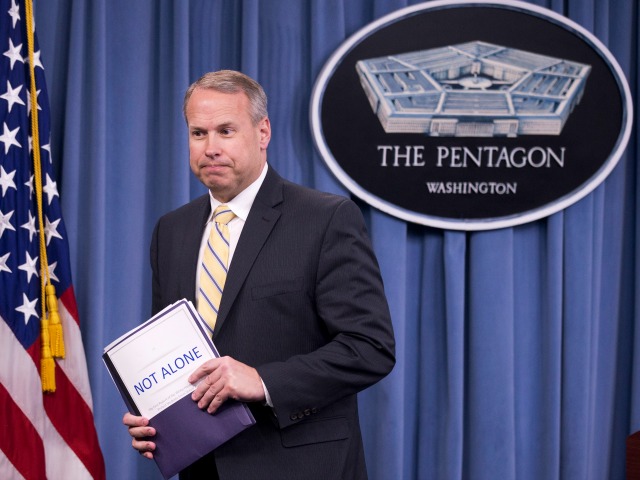WASHINGTON, D.C.–The prevalence of sexual assaults in the military decreased by about 25 percent to 19,000 in 2014, when compared to 26,000 in 2012, according to a Pentagon statement.
During the same period, victim reports increased by an estimated 66 percent to 5,983 in 2014, from 3,604 in 2012. The Pentagon views the increase in reporting as a “positive trend” because sexual assault victims tend to keep quiet.
In 2014, an estimated 4.3 percent of active duty women and 0.9 percent of active duty men experienced unwanted sexual contact, ranging from groping to rape, according to recent surveys included in a Department of Defense (DoD) report released on December 4.
Meanwhile, Pentagon officials, in announcing the release of the report, noted that retaliation for women who report sexual assault is still a problem.
“Compared to 2012, the DoD wide survey we are releasing today shows that the prevalence of sexual assaults in the military over the past year has decreased by about 25 percent,” said Defense Secretary Chuck Hagel during a Pentagon press briefing on the report, which was sent to President Obama.
“Recent survey data suggest the percentage of Active Duty women who experienced unwanted sexual contact in the past year declined from 6.1 percent in 2012 to 4.3 percent in 2014,” the report mentioned. “For Active Duty men, the rate of unwanted sexual contact stayed about the same, moving from 1.2 percent in 2013 to 0.9 percent in 2014.”
“Although the prevalence rates of sexual assault in the Department are showing a downward trend, even one sexual assault in the Armed Forces is one too many,” the DoD continued. “The Department’s goal is to intensify its prevention work to continue this progress in forthcoming years.”
In 2012, one in ten victims was reporting sexual assaults in the military. That rate increased to one in four in 2014. “Given the underreported nature of sexual assault, the Department believes this increase in reporting is likely due to greater victim confidence in the response system,” the report noted.
Hagel and Gen. Snow acknowledged that retaliation remains a problem. In 2014, 62 percent of women who experienced sexual assault and reported it to a military authority indicated that they perceived some sort of retaliation. Each military branch has “implemented new regulations against retaliation and ostracism associated with reporting crime,” the report stated.
“Retaliation includes taking or threatening to take an adverse personnel action or withholding or threatening to withhold a favorable personnel action, with respect to a member of the Armed Forces because the member made a protected communication (e.g., filed a report of sexual assault),” it added. “Additionally, retaliation includes social ostracism and such acts of maltreatment committed by peers of the victim or by other persons because the member made a protected communication.”
The report also revealed that more sexual assault offenders are being held accountable. More offenders are facing military court charges now.
“Since FY 2009, the number of sexual assault cases where courts-martial charges were [initiated] increased by 81 percent, from 21 percent of cases in 2009 to 38 percent of cases in FY 2014,” the DoD indicated. “Also, the proportion of cases where command action was not possible decreased from 43 percent to 27 percent over the same period.”
The first standardized and voluntary survey of sexual assault survivors conducted across all DoD components, which was part of the report, revealed that 90 percent of survivors were satisfied or very satisfied with the services and legal counsel they received.
Furthermore, that survey showed that “nearly three-quarters of all respondents indicated they would recommend others report their sexual assault,” according to the Pentagon.

COMMENTS
Please let us know if you're having issues with commenting.